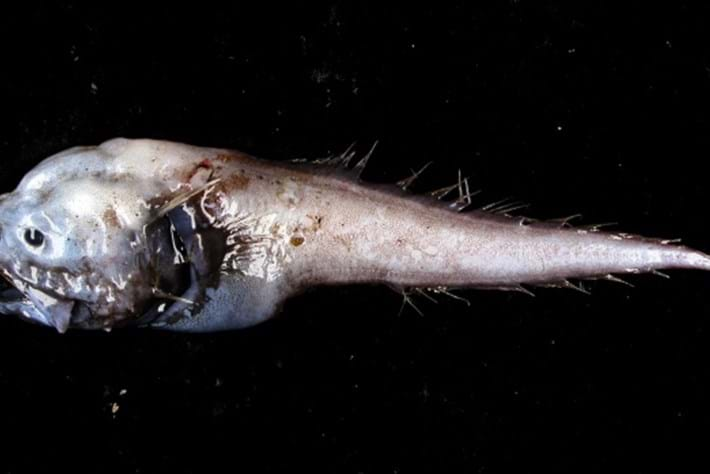A new species of bony-eared assfish (Acanthonus armatus) was discovered in the Celebes Sea off the coast of Sulawesi, Indonesia. This is the first time this species has been photographed alive and in its natural habitat. The fish is characterized by its large eyes, long mouth, and distinctive bony ear plates. It is a member of the family Acheilognathidae, which contains over 500 species of freshwater fishes found in Asia. This new discovery is a great example of how little we still know about the creatures that inhabit our planet’s oceans. With over two-thirds of the world’s surface covered by water, there are bound to be many more discoveries like this one waiting to be made.
What is the Rare Bony-eared Assfish?
Acanthonus armatus, also known as the rare bony-eared assfish, is a species of fish in the family Acanthuridae. It is found in the eastern Atlantic Ocean and Mediterranean Sea.
Where does it live?
The bony-eared assfish (Acanthonus armatus) is a species of freshwater fish in the family Cyprinidae. It is endemic to Lake Tanganyika in Africa.
The bony-eared assfish is a medium-sized fish that can grow up to 30 cm in length. It has a slender body with a long, pointed head. The fish is silver in color with black markings on its fins.
What does it look like?
It has a large head and eyes, and a long body with a forked tail. The Assfish gets its name from its large rear fins, which resemble the buttocks of an donkey or ass. These fins help the fish to swim upright in the water column. The Bony-eared Assfish is brown or black in color, with white spots on its sides. It grows to a maximum length of 18 cm (7 in).

How big does it get?
The Bony-eared Assfish can reach a length of up to 60 cm (2 ft), making it one of the largest members of its family. However, most individuals are only around 30 cm (1 ft) long. It is a deep-water fish, living at depths of up to 1,500 m (4,900 ft).
What do we know about its diet and behavior?
Acanthonus armatus, or the bony-eared assfish, is a species of fish in the Assfish family. It is the only member of its genus.It typically inhabits deep coral reefs and sand flats at depths of 30–200 m (98–656 ft).
The bony-eared assfish is a small fish, growing to a maximum length of 15 cm (5.9 in). It has a laterally compressed body with a short head and snout. The mouth is small and forms a terminal or subterminal opening. The eyes are large and have prominent iridescent blue streaks. There are two dorsal fins, both of which have 3 spines and 17–19 soft rays. The anal fin has 2 spines and 15–17 soft rays. The pectoral fins are shorter than the head length. .
. There are 24–26 gill rakers on the first arch. The coloration of the body varies depending on location, but it is typically some shade of brown or greenish-brown with darker mottling or spots. Juveniles often have conspicuous
Why is it endangered?
It is an endangered species due to overfishing and habitat loss. The Bony-eared Assfish has a long, slender body with large eyes and a small mouth. It gets its name from the two long, fleshy barbels on its head, which resemble donkey ears. The Bony-eared Assfish grows to a maximum length of 40 cm (16 in). It is a bottom-dwelling fish that prefers sandy or muddy habitats at depths of 100–800 m (330–2,620 ft). population of the Bony-eared Assfish has declined sharply in recent years, and it is now classified as Critically Endangered by the IUCN Red List.
What can be done to help protect it?
. One of which is to support organizations that are working to conserve and manage this species, as well as its habitat. Another way to help is by being aware of the threats this fish faces and taking action to reduce them. For example, reducing your impact on its habitat by not polluting or overfishing in areas where it lives. Additionally, supporting sustainable fisheries and making sure any fish you consume are from reputable sources can also help reduce the demand for illegally caught fish. Finally, spreading awareness about this amazing species and working to increase its public profile can help ensure its long-term survival.
Conclusion
This concludes our article on the rare bony-eared assfish (Acanthonus armatus). We hope you enjoyed learning about this unique creature and that you now have a better understanding of its place in the world. Be sure to check out our other articles on interesting animals for more fun facts and photos.











+ There are no comments
Add yours